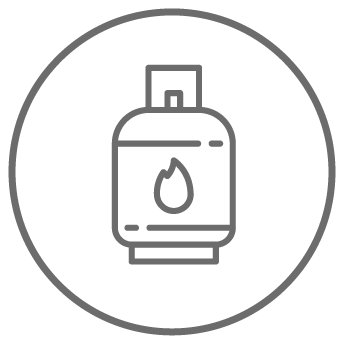Natural gas -Frequently asked questions about storage

Natural gas brings with it the issue of storage; we see here together the answer to the most common questions.
Natural gas storage – Purpose
The practice of storage responds to the needs of gas production and to the demands of the market and allows managing production and transporting structures in an elastic way, but not only. Thanks to storage, strategic reserves are maintained to be used in very cold conditions, international crises that block supply from abroad and more. Generally, in summer, the field is filled and in winter, the gas is fed into the national network.
A curiosity? Today factories in Italy allow the storage of approximately 14,000 million cubic meters of gas.
Natural gas field - Characteristics
The reservoir is an underground structure that looks like a porous and permeable rock system that delivers the quantity of gas required by the market and guarantees its permanence. We can imagine the field as a sponge capable of holding and releasing the gas.
The characteristics are a correct conformation of the rock, the fact of being located between 1000 and 2000 meters deep, the right porosity and permeability. The cap rock must be clay to prevent the gas from migrating to the surface.
Natural gas storage - History
In 1915, the first underground storage facility was built in Canada and in 1916 in the USA. Since that time, this technique has undergone a constant evolution and today we can count 600 storage sites in the world, of which 70% in the USA and the text in Europe. In Italy, the first natural gas storage site was built in 1964 in Cortemaggiore in Emilia Romagna and today there are 10 active sites and 3 under construction.
How do you keep gas in the reservoir rock?
This process is possible by the impermeable cap rock, which prevents gas leaks in the surrounding areas. The emissions from the high chimneys are used only for safety reasons and in any case, the gas introduced into the atmosphere is minimal. There are no interactions even between the plants, the ground and the water environment since any liquid residue is collected and disposed of and there is no shortage of waterproof containment basins that contain any spills.
What is the impact of the system on the landscape?
Usually the presence of a storage facility is signalled by the wells and the facilities of the power plant and the impact is minimized by planting along the boundary of the affected areas. Furthermore, since the gas is found at great depths (1000 - 1500 meters), the activities carried out on the surface, including agriculture, are not affected.
Have there ever been accidents?
The practice of natural gas storage is safe and there have never been any major accidents for workers and local communities in Italy. The specific legislation makes the sector safe and most of the accidents of the workers in the sector, as evidenced by the INAIL insurance risk tables, occur in the journey between home and workplace.
Local populations are also protected in terms of health and safety thanks to the application of mining safety regulations and the examination of the project by the CTRs to identify the risk and implement specific prevention and protection programs for each plant.
How do you choose the site for the storage of natural gas?
In selecting natural gas storage sites, the ability of the land to store and let the gas escape is crucial. No less important is the national transport network for distributing gas and the environmental compatibility and safety of the plants, which sees the active participation of the population involved in the assessment.
Settala Gas and gas transport
Settala Gas has always worked on the production, transport and marketing of natural gas with trucks and cylinders that comply with RAC regulations. To ensure the quality of our products, we offer a hot purge service for all types of cylinders and tankers. The chemical laboratory issues a certificate of conformity for each delivery.
In particular, since 1966, Settala Gas has been operating in the distillation and treatment of hydrocarbon gases sector and manages a specialized production plant capable of satisfying any quality requirement.
Contact us to discover our products!




